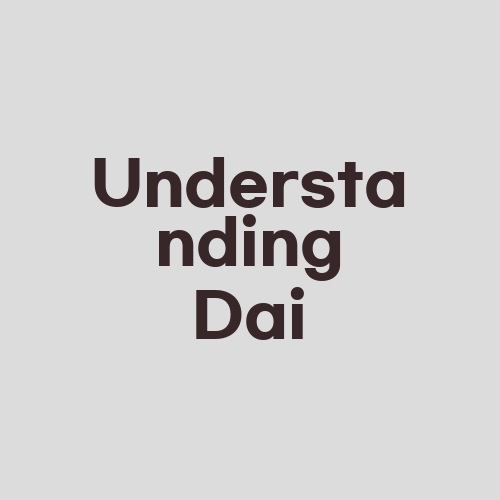Understanding Dai

Understanding Dai
The Dai Stablecoin: What is it?
Dai is a decentralized stablecoin, created in 2017 by the blockchain-based lending platform MakerDAO. It is pegged to the value of the US dollar and backed by a basket of collateral assets. Dai is mainly used by traders, investors and holders as a way to store value, trade cryptocurrencies and hedge against market volatility. Unlike other stablecoins, Dai is issued and managed by a smart contract, which makes it transparent, secure and non-custodial. The smart contract algorithm adjusts the supply of Dai based on the demand for it, ensuring that the price remains stable at 1 USD. If you want to learn more about the technical details and economics of Dai, visit the official MakerDAO website at https://makerdao.com/en/.
The MakerDAO Ecosystem: How does it work?
MakerDAO is a decentralized autonomous organization (DAO) built on the Ethereum blockchain. It consists of three main components: the Dai stablecoin, the Maker token (MKR) and the MakerDAO governance system. MKR holders are the ones who govern the MakerDAO system by voting on proposals and changes to the protocol, such as adjusting the stability fee, modifying the collateral types or upgrading the smart contract. The stability fee is the interest rate paid by borrowers who use their collateral to generate Dai. It serves as a monetary policy tool to incentivize or disincentivize borrowing, depending on the supply and demand dynamics of the Dai system. To explore the MakerDAO ecosystem and community, join the MakerDAO subreddit at https://www.reddit.com/r/MakerDAO/.
The Advantages of Dai: Why use it?
Dai offers several advantages over traditional stablecoins and fiat currencies. Firstly, Dai is decentralized and censorship-resistant, meaning that no central authority can freeze or confiscate your funds without your consent. Secondly, Dai is transparent and auditable, meaning that anyone can verify the total supply, the collateral assets and the transaction history of Dai on the blockchain. Thirdly, Dai is borderless and global, meaning that you can send and receive Dai to anyone, anywhere in the world, without intermediaries or restrictions. Fourthly, Dai is non-inflationary and deflationary, meaning that its supply is limited and its value can potentially increase over time, as long as its demand exceeds its supply. Lastly, Dai is compatible with a wide range of wallets, exchanges and dapps, making it easy to access and use. To find out more about the benefits of Dai, read the MakerDAO whitepaper at https://makerdao.com/en/whitepaper/.
The Risks of Dai: What to watch out for?
Although Dai has many advantages, it also has some risks and limitations. Firstly, Dai is only as good as its collateral, which means that if the collateral value drops significantly, the stability of Dai may be compromised. Secondly, Dai is not backed by any legal or regulatory authority, which means that there is no legal recourse if something goes wrong with the MakerDAO system. Thirdly, Dai is not immune to smart contract bugs or hacks, which means that there is always a risk of losing your Dai if the system is compromised. Fourthly, Dai may not always be as liquid or stable as other stablecoins, which means that its price may fluctuate more than expected during periods of high demand or low liquidity. To mitigate these risks, it is important to do your own research, use reputable wallets and exchanges, and diversify your portfolio. To learn more about the risks and limitations of Dai, read the MakerDAO risk disclosures at https://makerdao.com/en/legal/risk-disclosure/.
The Future of Dai: What’s next?
The future of Dai looks bright, as MakerDAO continues to innovate, expand and improve its protocol and ecosystem. Some of the upcoming developments and initiatives include the integration of other collateral types, such as real estate, stocks or commodities, the implementation of multi-collateral Dai (MCD), which will enable users to generate Dai with different types of collateral and the launch of new dapps and services that leverage Dai’s stability and decentralization. Moreover, MakerDAO is also exploring the possibility of using Dai as a global reserve currency, as a viable alternative to the US dollar. To stay up-to-date with the latest news and updates regarding Dai, follow the MakerDAO blog at https://blog.makerdao.com/.
Conclusion
Dai is a new type of stablecoin that combines the advantages of cryptocurrencies, such as decentralization and transparency, with the stability and liquidity of fiat currencies. It is a promising solution to the long-standing problem of volatility in the crypto markets and a useful tool for traders, investors and holders. However, it is not without risks and limitations, and it requires caution, diligence and education on the part of its users. If you are interested in learning more about Dai, its technology, its economics and its community, visit the MakerDAO website at https://makerdao.com/en/.